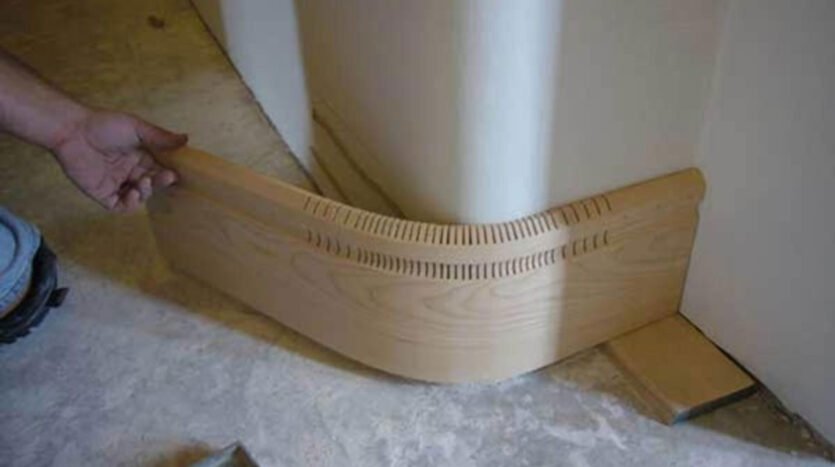How to Tackle Tricky Shapes with Curved Skirting Boards
Fitting skirting boards around straightforward, square-edged rooms is one thing—but what about homes with curved walls, bay windows, or tricky alcoves? That’s where curved skirting boards come into their own. Whether you’re dealing with an older property full of character or a modern build with architectural curves, flexible skirting can help you achieve a clean, professional finish with minimal stress.
In this blog, we’ll explore how curved skirting boards work, when to use them, and how to install them effectively—especially when tackling those awkward or non-standard shapes.
Why Use Curved Skirting Boards?
A curved skirting board are designed to follow the contour of a non-linear wall. Unlike traditional rigid MDF or timber skirting, curved or flexible skirting is manufactured from bendable materials that allow it to conform to curved walls or rounded features.
These types of skirting boards are particularly useful for:
- Bay windows
- Rounded pillars or columns
- Curved staircases
- Arched or domed walls
- Feature alcoves or nooks
The main benefit is that they allow you to maintain a seamless flow in your interior design. Without them, curved walls often end up with gaps, rough transitions, or inconsistent finishes where rigid skirting has been awkwardly cut and patched.
What Materials Are Used for Curved Skirting?
Flexible skirting boards are typically made from high-density polyurethane, flexible MDF, or other polymer-based materials. These materials are strong enough to protect walls from damage—just like standard skirting—but flexible enough to bend around curves without cracking or warping.
Some skirting profiles are also available in both rigid and flexible versions. This means you can achieve a consistent look throughout your home, using standard skirting for straight runs and matching flexible skirting in curved areas.
Planning Your Installation Around Tricky Shapes
Before ordering or fitting curved skirting boards, it’s important to assess the shape and layout of the wall area in question.
- Measure the Radius or Curve: If the curve is gentle and long (such as around a bay window), flexible skirting can usually be bent by hand. Tighter curves may need a more specialist product with a greater bend radius.
- Choose the Right Profile: The profile (or design) of the skirting should match your existing skirting style, especially if you’re only adding it in specific areas. Most suppliers offer ogee, torus, chamfered and bullnose profiles in flexible options.
- Think About Height and Thickness: The taller or thicker the skirting, the harder it will be to bend—so opt for a more manageable size if you’re working with a tight curve.
- Plan Fixing Points: Flexible skirting can be glued or pinned in place, depending on the surface and the material behind it. A smooth wall will be easier to bond to than a rough or uneven one.
Installing Curved Skirting Boards
Once you’ve chosen the right material and shape, fitting curved skirting is relatively straightforward if approached with care.
- Let It Adjust to Room Conditions: Flexible skirting should be left in the room where it will be installed for at least 24 hours. This allows it to adjust to the room’s temperature and humidity.
- Apply Adhesive Evenly: Use a strong grab adhesive along the back of the skirting. Start from one end and gradually press it into place, following the curve of the wall.
- Use Temporary Fixings: To hold the skirting in place while the adhesive sets, you can use temporary fixings like pins, clamps or masking tape. Make sure there’s constant pressure across the curve to prevent it from lifting.
- Seal and Paint: Once dry, any minor gaps can be sealed with decorators’ caulk before painting. Most flexible skirting boards come primed and ready to paint.
If the installation is particularly complex—such as around ornate curved staircases or irregular stonework—it’s worth considering professional help. A skilled fitter will have experience in shaping and scribing flexible skirting for a perfect fit.
Where Curved Skirting Adds Most Value
Using curved skirting in the right places can greatly enhance the overall look of a room. Here are some examples where it makes a real difference:
- Victorian and Edwardian Homes: Many period properties feature curved bay windows, which can look unfinished without a skirting that follows the shape of the wall.
- Modern Open-Plan Designs: New-build homes with contemporary curves can maintain a sleek look with matching skirting that enhances the flow of the room.
- Feature Areas: Rounded walls or curved breakfast bars are popular design features. Curved skirting allows these elements to be highlighted without compromising on style.
- Heritage Renovations: If you’re restoring a character home, flexible skirting can help you maintain the original charm and design integrity.
Key SEO Considerations for Curved Skirting Boards
If you’re looking for curved skirting boards online, you might be searching for terms like:
- Flexible skirting board
- Curved skirting board for bay windows
- How to install skirting on a curved wall
- Best skirting for rounded walls
- Made-to-measure skirting board for awkward shapes
It’s important to understand that many homeowners don’t realise curved skirting exists, or that it’s even possible to achieve a professional finish on non-standard walls. Educating your customers about this option not only builds trust—it also makes your business stand out.
By offering high-quality curved skirting board products and installation services, you’re helping people tackle a problem they thought had no simple solution.
Final Thoughts
Curved walls may look great from a design perspective, but they can create practical challenges when it comes to finishing touches like skirting. That’s where curved skirting boards prove their worth. Designed to flex and bend without cracking, they make it possible to achieve a smooth, professional finish on even the most awkward surfaces.
If you want a clean, consistent look across every room, regardless of shape, flexible skirting is the way forward. It allows you to preserve the architectural integrity of your space while enjoying all the protective and decorative benefits of standard skirting.


